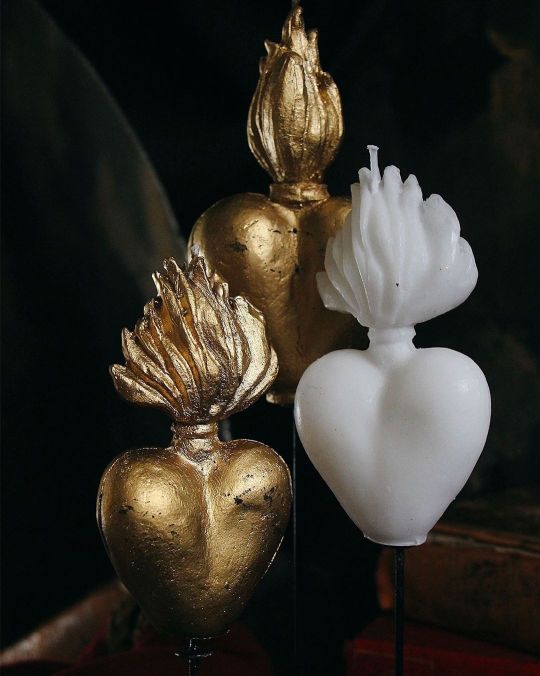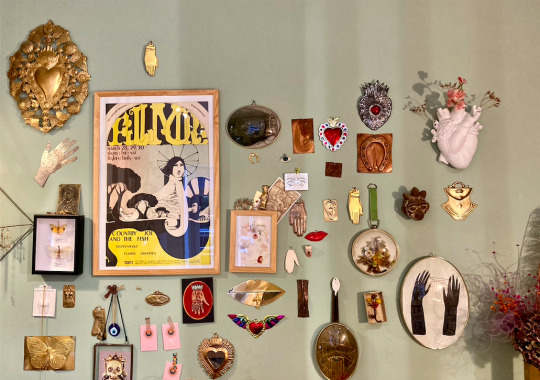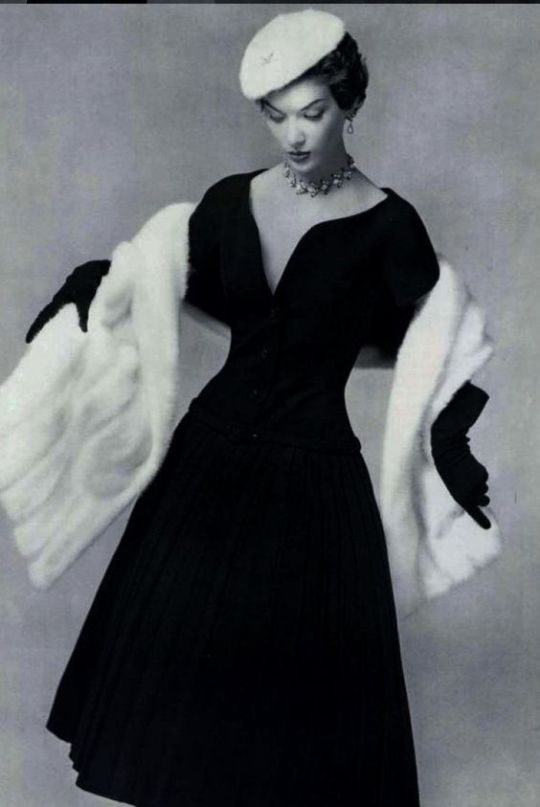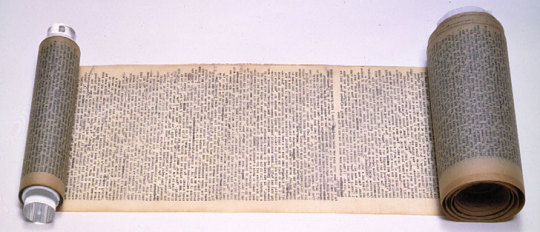#boncoeur
Photo

La générosité est un don de l'âme 🙏✨❤️ #thomassicsic #genereux #genereuse #generosite #gentil #gentillesse #gentille #citationlove #citationinspirante #citationpositive #citationsdujour #citationfrançaise #ame #lame #belleame #grandcoeur #boncoeur #bellepersonne #coeursurlamain #citationamitié #citationtriste #phrasedujour #dictondujour #coachdevie #developpementpersonnel #developpementspirituel (à Ducey-Les Chéris) https://www.instagram.com/p/CpuXIYntFrA/?igshid=NGJjMDIxMWI=
#thomassicsic#genereux#genereuse#generosite#gentil#gentillesse#gentille#citationlove#citationinspirante#citationpositive#citationsdujour#citationfrançaise#ame#lame#belleame#grandcoeur#boncoeur#bellepersonne#coeursurlamain#citationamitié#citationtriste#phrasedujour#dictondujour#coachdevie#developpementpersonnel#developpementspirituel
2 notes
·
View notes
Text
I love writing things about my wol and they're so serious and I have to write out her name which is Cottoncandy.
Like. I know it's a big ask but brain you and everyone else you need to suspend your disbelief for two seconds and just accept that her name is Cottoncandy and she has deep emotional issues
#i love having three wols all named after food and then three ocs not#like... this is fraise and her wife myr(tille) it fits. both berries.#this is G'ateau and Artur a bit weird but G'ateau sounds a bit fancy#and then like... oh yeah this is Cottoncandy Vanilla... and Alastair Boncoeur. like. stop#but what can i fucking do!!!!! changing her name now is not possible.#i chose Silas and Adam's names specifically because they were both bibley and would fit together well#but i was not expecting to have alastair be connected to Cottoncandy at all so having their names match did not enter my mind lol
1 note
·
View note
Photo

SOLDES sur les coeurs en cire de chez @_boncoeurs_ !! Les coeurs Jeanne, Romane et Mona vous attendent en boutique et sur notre eshop ! Belle journée, Bell semaine ! ATTENTION ⚠️ Nous seront fermés à l’occasion de @maisonetobjet le jeudi 19 et vendredi 20 janvier !!! #coeur #mona #jeanne #romane #exvoto #boncoeurs #ciergeriedespremontres #cire #objetencire #curiosity #soldes #amiens #wanderlust (à Wanderlust concept store) https://www.instagram.com/p/Cng15tUs9_m/?igshid=NGJjMDIxMWI=
#coeur#mona#jeanne#romane#exvoto#boncoeurs#ciergeriedespremontres#cire#objetencire#curiosity#soldes#amiens#wanderlust
0 notes
Photo

Mur inspirant de la boutique de bijoux La2l dans Le Marais, Paris, février 2022.
2K notes
·
View notes
Photo

誤解されやすいものと私 ・ 昔よくみた二宮金次郎の銅像が各地で撤去されているようです。元々は薪を背負いながら読書をしている姿が「働きながらも学ぶことを怠らない」ことを訴えたかったようです。 ・ 現代社会においては「歩きスマホ」を連想させるという理由から銅像が撤去されているようで、銅像が本来伝えたい内容が完全に誤解されていて残念だなと思ったものです。 ・ そんな彼が言った「一人の人間は、宇宙にあっては限りなく小さいが、 その誠意は天地をも動かすことができる。」というのは本当に良い言葉ですよね。 ・ という訳で本日のモーニングは「誠意、真心」という意味を持つフランス語の #BonCoeur #ボンクール です。 ・ そう言えば最近のモーニングで #パン を食べていないなと朝の散歩をしながら思っていたところに素敵な感じの店を見つけて入ってみました。 ・ 甘いのから塩っぱいのまで各種取り揃えたラインナップで色々と目移りしてしまいますが、揚げたてのフレーズに惹かれて #ビーフカレーパン と見た目のインパクトのある #マカロニボード にしました。 ・ 店内や店先にイートインスペースがありましたが、二宮金次郎スタイルで歩きながら食べようと思いテイクアウトにしました。 ・ まず #カレーパン の #カレー は欧風でコクがありつつ少しスパイスを感じます。外側は揚げたサクッとした食感と内側の少し弾力のある感じがあり美味しい。 ・ 続いてのマカロニボードは食べた瞬間の #マカロニ の食感がいい。続いてクリーミーで玉ねぎの香りと甘さがパッと広がるソースが抜群です。 ・ 緑色部分のブロッコリーも甘くて彩りも含めて良い感じのアクセントになっています。店を出た後に500円以上お買い上げでコーヒー無料の看板を見つけましたが時既に遅し。 ・ 手元のスマホばかり眺めてないで、ちゃんと前を見ていれば店の誠意に気づけたハズです。誠意って難しいですね。次回は甘い系のパンやコーヒーも含めて頂きたいと思います。 ・ #神田モーニング #神田ランチ #神田カフェ #神田パン #新日本橋モーニング #新日本橋ランチ #新日本橋カフェ #新日本橋パン #三越前モーニング #三越前ランチ #三越前カフェ #三越前パン #とa2cg (室町ボンクール) https://www.instagram.com/p/CHOWt7XATpU/?igshid=1wtvu4z0lofsw
#boncoeur#ボンクール#パン#ビーフカレーパン#マカロニボード#カレーパン#カレー#マカロニ#神田モーニング#神田ランチ#神田カフェ#神田パン#新日本橋モーニング#新日本橋ランチ#新日本橋カフェ#新日本橋パン#三越前モーニング#三越前ランチ#三越前カフェ#三越前パン#とa2cg
0 notes
Photo

Á votre bon coeur, Messieurs Dames. Si vous ne remplissez pas mon pot de croquettes... je fais revenir le lundi. Direz pas que je ne vous ai pas prévenu. À bon entendeur... #chatcoquin #boncoeur #fairelamanche #demaincestlundi #croquettes #humour #fousrires #chantagedechat #lundileretour #karma♻️ #félin #chat #instacat #rigolo #douceur #tendresse #félicité #partage #instagraphy #peace https://www.instagram.com/ameliediack/p/BwKvbIBnSwM/?utm_source=ig_tumblr_share&igshid=13ebzf72o4g2x
#chatcoquin#boncoeur#fairelamanche#demaincestlundi#croquettes#humour#fousrires#chantagedechat#lundileretour#karma♻️#félin#chat#instacat#rigolo#douceur#tendresse#félicité#partage#instagraphy#peace
0 notes
Photo

Quelques bondieuseries « coup de cœur » pour vous souhaiter un excellent week-end ✨ . . . #boncoeurs #exvoto #deco #coupdecoeur (à Rennes, France) https://www.instagram.com/p/B5Lj3PGqoWf/?igshid=1r9xb4wr8j25n
0 notes
Photo

#teamscorpio #teamscorpion #espritdouteux #amiattentionné #boncoeur #vulgaire #petitmalin #grandeâme #doux #pecheur #humble #jenesuispasparfait #jesuisscorpion #toutmoi #november #novembre #astrologie https://www.instagram.com/p/Bppb4SSgZTE/?utm_source=ig_tumblr_share&igshid=ib0zzbb7nbgj
#teamscorpio#teamscorpion#espritdouteux#amiattentionné#boncoeur#vulgaire#petitmalin#grandeâme#doux#pecheur#humble#jenesuispasparfait#jesuisscorpion#toutmoi#november#novembre#astrologie
0 notes
Photo

#CitationDuJour #Punchline #Citation #LouisDeFunès #LaSolutionEstEnVous #BonCoeur > #Style #Réputation #Argent
#réputation#citationdujour#boncoeur#argent#punchline#louisdefunès#lasolutionestenvous#citation#style
0 notes
Photo

On reste ouvert jusque 18H pour les derniers cadeaux ! Et ces deux beautés @_boncoeurs_ sont encore dispos ! Sinon bah bon réveillon les zamis !!! Posted @withrepost • @_boncoeurs_ Une délicate fleur au creux de la main et la pivoine 🎄 Merci à @ginacie pour cette magnifique photo 🥰🌺 *** A delicate flower in the palm of you hand Thanks to @ginacie for this beautiful photo 🥰🌺 #pivoine #main #fleurs #boncoeurs #noël #noel2022 #cadeaunoel #wanderlust #amiens (à Wanderlust concept store) https://www.instagram.com/p/CmjRzmeM3nG/?igshid=NGJjMDIxMWI=
0 notes
Photo


Strange Magic Noir AU: Adeline Boncoeur

#strange magic#spread the lofe#adeline the kindhearted#my ocs#artists on tumblr#color#coloring#finished#noir au#strange magic noir au
45 notes
·
View notes
Text
Haiti pushes foster homes to counter problems in orphanages
Port-au-Prince (AFP) - Rose Boncoeur brought two emaciated little girls to live in her modest home in Haiti as part of a reform drive aimed at keeping children out of orphanages.

source https://feedimo.com/story/80855714
0 notes
Text
On the Road a novel by Jack Kerouac
From Wikipedia, the free encyclopedia

On the Road is a novel by American writer Jack Kerouac, based on the travels of Kerouac and his friends across the United States. It is considered a defining work of the postwar Beat and Counterculture generations, with its protagonists living life against a backdrop of jazz, poetry, and drug use. The novel, published in 1957, is a roman à clef, with many key figures in the Beat movement, such as William S. Burroughs (Old Bull Lee), Allen Ginsberg (Carlo Marx) and Neal Cassady (Dean Moriarty) represented by characters in the book, including Kerouac himself as the narrator Sal Paradise.
The idea for On the Road, Kerouac's second novel, was formed during the late 1940s in a series of notebooks, and then typed out on a continuous reel of paper during three weeks in April 1951. It was first published by Viking Press in 1957. After several film proposals dating from 1957, the book was finally made into a film, On the Road(2012), produced by Francis Ford Coppola and directed by Walter Salles.
When the book was originally released, The New York Times hailed it as "the most beautifully executed, the clearest and the most important utterance yet made by the generation Kerouac himself named years ago as 'beat,' and whose principal avatar he is."[1] In 1998, the Modern Library ranked On the Road 55th on its list of the 100 best English-language novels of the 20th century. The novel was chosen by Time magazine as one of the 100 best English-language novels from 1923 to 2005.[2]
Contents
1Production and publication
2Plot
3Reception
4Influence
5Film adaptation
6Beat Generation
7See also
8References
9Further reading
10External links
2.1Part One
2.2Part Two
2.3Part Three
2.4Part Four
2.5Part Five
2.6Characters
3.1Initial reaction
3.2Critical study
Production and publication
After Kerouac dropped out of Columbia University, he served on several different sailing vessels before returning to New York to write. He met and mixed with Beat Generation figures Allen Ginsberg, William Burroughs, and Neal Cassady. Between 1947 and 1950, while writing what would become The Town and the City (1950), Kerouac engaged in the road adventures that would form On the Road.[3] Kerouac carried small notebooks, in which much of the text was written as the eventful span of road trips unfurled. He started working on the first of several versions of the novel as early as 1948, based on experiences during his first long road trip in 1947. However, he remained dissatisfied with the novel.[4] Inspired by a 1000-word rambling letter from his friend Neal Cassady, Kerouac in 1950 outlined the "Essentials of Spontaneous Prose" and decided to tell the story of his years on the road with Cassady as if writing a letter to a friend in a form that reflected the improvisational fluidity of jazz.[5] In a letter to a student in 1961, Kerouac wrote: "Dean and I were embarked on a journey through post-Whitman America to find that America and to find the inherent goodness in American man. It was really a story about 2 Catholic buddies roaming the country in search of God. And we found him."[6]
The first draft of what was to become the published novel was written in three weeks in April 1951, while Kerouac lived with Joan Haverty, his second wife, at 454 West 20th Street in New York City's Manhattan. The manuscript was typed on what he called "the scroll"—a continuous, 120-foot scroll of tracing paper sheets that he cut to size and taped together.[7] The roll was typed single-spaced, without margins or paragraph breaks. In the following years, Kerouac continued to revise this manuscript, deleting some sections (including some sexual depictions deemed pornographic in the 1950s) and adding smaller literary passages.[8] Kerouac wrote a number of inserts intended for On the Road between 1951 and 1952, before eventually omitting them from the manuscript and using them to form the basis of another work, Visions of Cody (1951–1952).[9] On the Road was championed within Viking Press by Malcolm Cowley and was published by Viking in 1957, based on revisions of the 1951 manuscript.[10] Besides differences in formatting, the published novel was shorter than the original scroll manuscript and used pseudonyms for all of the major characters.
Viking Press released a slightly edited version of the original manuscript titled On the Road: The Original Scroll (August 16, 2007), corresponding with the 50th anniversary of original publication. This version has been transcribed and edited by English academic and novelist Dr. Howard Cunnell. As well as containing material that was excised from the original draft due to its explicit nature, the scroll version also uses the real names of the protagonists, so Dean Moriarty becomes Neal Cassady and Carlo Marx becomes Allen Ginsberg, etc.[11]
In 2007, Gabriel Anctil, a journalist of Montreal daily Le Devoir, discovered in Kerouac's personal archives in New York almost 200 pages of his writings entirely in Quebec French, with colloquialisms. The collection included 10 manuscript pages of an unfinished version of On the Road, written on January 19, 1951. The date of the writings makes Kerouac one of the earliest known authors to use colloquial Quebec French in literature.[12]
The original scroll of On The Road was bought in 2001 by Jim Irsay for $2.43 million (equivalent to $3.29 million in 2016). It has occasionally been made available for public viewing, with the first 30 feet (9 m) unrolled. Between 2004 and 2012, the scroll was displayed in a number of museums and libraries in the United States, Ireland, and the UK. It was exhibited in Paris in the summer of 2012 to celebrate the movie based on the book.[13]
Plot
The two main characters of the book are the narrator, Sal Paradise, and his friend Dean Moriarty, much admired for his carefree attitude and sense of adventure, a free-spirited maverick eager to explore all kicks and an inspiration and catalyst for Sal's travels. The novel contains five parts, three of them describing road trips with Moriarty. The narrative takes place in the years 1947 to 1950, is full of Americana, and marks a specific era in jazz history, "somewhere between its Charlie Parker Ornithology period and another period that began with Miles Davis." The novel is largely autobiographical, Sal being the alter ego of the author and Dean standing for Neal Cassady.
Part One
The first section describes Sal's first trip to San Francisco. Disheartened after a divorce, his life changes when he meets Dean Moriarty, who is "tremendously excited with life," and begins to long for the freedom of the road: "Somewhere along the line I knew there would be girls, visions, everything; somewhere along the line the pearl would be handed to me." He sets off in July 1947 with fifty dollars in his pocket. After taking several buses and hitchhiking, he arrives in Denver, where he hooks up with Carlo Marx, Dean, and their friends. There are parties—among them an excursion to the ghost town of Central City. Eventually Sal leaves by bus and gets to San Francisco, where he meets Remi Boncoeur and his girlfriend Lee Ann. Remi arranges for Sal to take a job as a night watchman at a boarding camp for merchant sailors waiting for their ship. Not holding this job for long, Sal hits the road again. "Oh, where is the girl I love?" he wonders. Soon he meets Terry, the "cutest little Mexican girl," on the bus to Los Angeles. They stay together, traveling back to Bakersfield, then to Sabinal, "her hometown," where her family works in the fields. He meets Terry's brother Ricky, who teaches him the true meaning of "mañana" ("tomorrow"). Working in the cotton fields, Sal realizes that he is not made for this type of work. Leaving Terry behind, he takes the bus back to Times Square New York, bums a quarter off a preacher who looks the other way, arrives at his Aunt's house in Paterson, just missing Dean, who had come to see him, by two days.
Part Two
In December 1948 Sal is celebrating Christmas with his relatives in Testament, Virginia, when Dean shows up with Marylou (having left his second wife, Camille, and their newborn baby, Amy, in San Francisco) and Ed Dunkel. Sal's Christmas plans are shattered as "now the bug was on me again, and the bug's name was Dean Moriarty." First they drive to New York, where they meet Carlo and party. Dean wants Sal to make love to Marylou, but Sal declines. In Dean's Hudson they take off from New York in January 1949 and make it to New Orleans. In Algiers they stay with the morphine-addicted Old Bull Lee and his wife Jane. Galatea Dunkel joins her husband in New Orleans while Sal, Dean, and Marylou continue their trip. Once in San Francisco, Dean again leaves Marylou to be with Camille. "Dean will leave you out in the cold anytime it is in the interest of him," Marylou tells Sal. Both of them stay briefly in a hotel, but soon she moves out, following a nightclub owner. Sal is alone and on Market Street has visions of past lives, birth, and rebirth. Dean finds him and invites him to stay with his family. Together, they visit nightclubs and listen to Slim Gaillard and other jazz musicians. The stay ends on a sour note: "what I accomplished by coming to Frisco I don't know," and Sal departs, taking the bus back to New York.
Part Three
In the spring of 1949, Sal takes a bus from New York to Denver. He is depressed and lonesome; none of his friends are around. After receiving some money, he leaves Denver for San Francisco to see Dean. Camille is pregnant and unhappy, and Dean has injured his thumb trying to hit Marylou for sleeping with other men. Camille throws them out, and Sal invites Dean to come to New York, planning to travel further to Italy. They meet Galatea, who tells Dean off: "You have absolutely no regard for anybody but yourself and your kicks." Sal realizes she is right—Dean is the "HOLY GOOF"—but also defends him, as "he's got the secret that we're all busting to find out." After a night of jazz and drinking in Little Harlem on Folsom Street, they depart. On the way to Sacramento they meet a "fag", who propositions them. Dean tries to hustle some money out of this but is turned down. During this part of the trip Sal and Dean have ecstatic discussions having found "IT" and "TIME". In Denver a brief argument shows the growing rift between the two, when Dean reminds Sal of his age, Sal being the older of the two. They get a '47 Cadillac from a travel bureau that needs to be brought to Chicago. Dean drives most of the way, crazy, careless, often speeding over 100 miles per hour (160 km/h), bringing it in a disheveled state. By bus they move on to Detroit and spend a night on Skid Row, Dean hoping to find his homeless father. From Detroit they share a ride to New York and arrive at Sal's aunt's new flat in Long Island. They go on partying in New York, where Dean meets Inez and gets her pregnant while his wife is expecting their second child.
Part Four
In the spring of 1950, Sal gets the itch to travel again while Dean is working as a parking lot attendant in Manhattan, living with his girlfriend Inez. Sal notices that he has been reduced to simple pleasures—listening to basketball games and looking at erotic playing cards. By bus Sal takes to the road again, passing Washington, D.C., Ashland, Cincinnati, and St. Louis, and eventually reaching Denver. There he meets Stan Shephard, and the two plan to go to Mexico City when they learn that Dean has bought a car and is on the way to join them. In a rickety '37 Ford sedan the three set off across Texas to Laredo, where they cross the border. They are ecstatic, having left "everything behind us and entering a new and unknown phase of things." Their money buys more (10 cents for a beer), police are laid back, cannabis is readily available, and people are curious and friendly. The landscape is magnificent. In Gregoria, they meet Victor, a local kid, who leads them to a bordello where they have their last grand party, dancing to mambo, drinking, and having fun with prostitutes. In Mexico City Sal becomes ill from dysentery and is "delirious and unconscious." Dean leaves him, and Sal later reflects that "when I got better I realized what a rat he was, but then I had to understand the impossible complexity of his life, how he had to leave me there, sick, to get on with his wives and woes."
Part Five
Dean, having obtained divorce papers in Mexico, had first returned to New York to marry Inez, only to leave her and go back to Camille. After his recovery from dysentery in Mexico, Sal returns to New York in the fall. He finds a girl, Laura, and plans to move with her to San Francisco. Sal writes to Dean about his plan to move to San Francisco. Dean writes back saying that he's willing to come and accompany Laura and Sal. Dean arrives over five weeks early, but Sal is out taking a late-night walk alone. Sal returns home, sees a copy of Proust, and knows it is Dean's. Sal realizes his friend has arrived, but at a time when Sal doesn't have the money to relocate to San Francisco. On hearing this Dean makes the decision to head back to Camille. Sal's friend Remi Boncoeur denies Sal's request to give Dean a short lift to 40th Street on their way to a Duke Ellington concert at the Metropolitan Opera House. Sal's girlfriend Laura realises this is a painful moment for Sal and prompts him for a response as the party drives off without Dean. Sal replies: "He'll be alright". Sal later reflects as he sits on a river pier under a New Jersey night sky about the roads and lands of America that he has travelled and states: ". . . I think of Dean Moriarty, I even think of Old Dean Moriarty the father we never found, I think of Dean Moriarty."
Characters
Kerouac often based his fictional characters on friends and family.[14][15]
"Because of the objections of my early publishers I was not allowed to use the same personae names in each work."[16]
Reception
The book received a mixed reaction from the media in 1957. Some of the earlier reviews spoke highly of the book, but the backlash to these was swift and strong. Although this was discouraging to Kerouac, he still received great recognition and notoriety from the work. Since its publication, critical attention has focused on issues of both the context and the style, addressing the actions of the characters as well as the nature of Kerouac's prose.
Initial reaction
In his review for The New York Times, Gilbert Millstein wrote, "its publication is a historic occasion in so far as the exposure of an authentic work of art is of any great moment in an age in which the attention is fragmented and the sensibilities are blunted by the superlatives of fashion" and praised it as "a major novel."[1] Millstein was already sympathetic toward the Beat Generation and his promotion of the book in the Times did wonders for its recognition and acclaim. Not only did he like the themes, but also the style, which would come to be just as hotly contested in the reviews that followed. "There are sections of On the Roadin which the writing is of a beauty almost breathtaking...there is some writing on jazz that has never been equaled in American fiction, either for insight, style, or technical virtuosity."[1] Kerouac and Joyce Johnson, a younger writer he was living with, read the review shortly after midnight at a newsstand at 69th Street and Broadway, near Joyce's apartment in the Upper West Side. They took their copy of the newspaper to a neighborhood bar and read the review over and over. "Jack kept shaking his head," Joyce remembered later in her memoir Minor Characters, "as if he couldn’t figure out why he wasn’t happier than he was." Finally, they returned to her apartment to go to sleep. As Joyce recalled: "Jack lay down obscure for the last time in his life. The ringing phone woke him the next morning, and he was famous.”[17]
The backlash began just a few days later in the same publication. David Dempsey published a review that contradicted most of what Millstein had promoted in the book. "As a portrait of a disjointed segment of society acting out of its own neurotic necessity, On the Road, is a stunning achievement. But it is a road, as far as the characters are concerned, that leads to nowhere." While he did not discount the stylistic nature of the text (saying that it was written "with great relish"), he dismissed the content as a "passionate lark" rather than a novel."[18]
Other reviewers were also less than impressed. Phoebe Lou Adams in Atlantic Monthly wrote that it "disappoints because it constantly promises a revelation or a conclusion of real importance and general applicability, and cannot deliver any such conclusion because Dean is more convincing as an eccentric than as a representative of any segment of humanity."[19] While she liked the writing and found a good theme, her concern was repetition. "Everything Mr. Kerouac has to say about Dean has been told in the first third of the book, and what comes later is a series of variations on the same theme."[19]
The review from Time exhibited a similar sentiment. "The post-World War II generation—beat or beatific—has not found symbolic spokesmen with anywhere near the talents of Fitzgerald, Hemingway, or Nathanael West. In this novel, talented Author Kerouac, 35, does not join that literary league, either, but at least suggests that his generation is not silent. With his barbaric yawp of a book, Kerouac commands attention as a kind of literary James Dean."[20] It considers the book partly a travel book and partly a collection of journal jottings. While Kerouac sees his characters as "mad to live...desirous of everything at the same time," the reviewer likens them to cases of "psychosis that is a variety of Ganser Syndrome" who "aren't really mad—they only seem to be."[20]
Critical study
On the Road has been the object of critical study since its publication. David Brooks of The New York Times compiled several opinions and summarized them in an Op-Ed from October 2, 2007. Whereas Millstein saw it as a story in which the heroes took pleasure in everything, George Mouratidis, an editor of a new edition, claimed "above all else, the story is about loss." "It's a book about death and the search for something meaningful to hold on to—the famous search for 'IT,' a truth larger than the self, which, of course, is never found," wrote Meghan O'Rourke in Slate. "Kerouac was this deep, lonely, melancholy man," Hilary Holladay of the University of Massachusetts Lowell told The Philadelphia Inquirer. "And if you read the book closely, you see that sense of loss and sorrow swelling on every page." "In truth, 'On the Road' is a book of broken dreams and failed plans," wrote Ted Gioia in The Weekly Standard.[21]
John Leland, author of Why Kerouac Matters: The Lessons of On the Road (They're Not What You Think), says "We're no longer shocked by the sex and drugs. The slang is passé and at times corny. Some of the racial sentimentality is appalling" but adds "the tale of passionate friendship and the search for revelation are timeless. These are as elusive and precious in our time as in Sal's, and will be when our grandchildren celebrate the book's hundredth anniversary."[22]
To Brooks, this characterization seems limited. "Reading through the anniversary commemorations, you feel the gravitational pull of the great Boomer Narcissus. All cultural artifacts have to be interpreted through whatever experiences the Baby Boomer generation is going through at that moment. So a book formerly known for its youthful exuberance now becomes a gloomy middle-aged disillusion."[21] He laments how the book's spirit seems to have been tamed by the professionalism of America today and how it has only survived in parts. The more reckless and youthful parts of the text that gave it its energy are the parts that have "run afoul of the new gentility, the rules laid down by the health experts, childcare experts, guidance counselors, safety advisers, admissions officers, virtuecrats and employers to regulate the lives of the young."[21]He claims that the "ethos" of the book has been lost.
Mary Pannicia Carden feels that traveling was a way for the characters to assert their independence: they "attempt to replace the model of manhood dominant in capitalist America with a model rooted in foundational American ideals of conquest and self-discovery."[23] "Reassigning disempowering elements of patriarchy to female keeping, they attempt to substitute male brotherhood for the nuclear family and to replace the ladder of success with the freedom of the road as primary measures of male identity."[23]
Kerouac's writing style has attracted the attention of critics. On the Road has been considered by Tim Hunt to be a transitional phase between the traditional narrative structure of The Town and the City (1951) and the "wild form" of his later books like Visions of Cody (1972).[24] Kerouac's own explanation of his style in "Essentials of Spontaneous Prose" (1953) is that his writing is like the Impressionist painters who sought to create art through direct observation. Matt Theado feels he endeavoured to present a raw version of truth which did not lend itself to the traditional process of revision and rewriting but rather the emotionally charged practice of the spontaneity he pursued.[25] Theado argues that the personal nature of the text helps foster a direct link between Kerouac and the reader; that his casual diction and very relaxed syntax was an intentional attempt to depict events as they happened and to convey all of the energy and emotion of the experiences.[25]
Influence
On the Road has been an influence on various poets, writers, actors and musicians, including Bob Dylan, Van Morrison, Jim Morrison, and Hunter S. Thompson.
From journalist Sean O'Hagan, in a 2007 article published in The Guardian:
" 'It changed my life like it changed everyone else's,' Dylan would say many years later. Tom Waits, too, acknowledged its influence, hymning Jack and Neal in a song and calling the Beats "father figures." At least two great American photographers were influenced by Kerouac: Robert Frank, who became his close friend—Kerouac wrote the introduction to Frank's book, The Americans—and Stephen Shore, who set out on an American road trip in the 1970s with Kerouac's book as a guide. It would be hard to imagine Hunter S. Thompson's road novel Fear and Loathing in Las Vegas had On the Road not laid down the template; likewise, films such as Easy Rider, Paris, Texas, and even Thelma and Louise. "[26]
In his book Light My Fire: My Life with The Doors, Ray Manzarek (keyboard player of The Doors) wrote "I suppose if Jack Kerouac had never written On the Road, The Doors would never have existed."
On the Road influenced an entire generation of musicians, poets, and writers including Allen Ginsberg. Because of Ginsberg’s friendship with Kerouac, Ginsberg was written into the novel through the character Carlo Marx. Ginsberg recalled that he was attracted to the beat generation, and Kerouac, because the beats valued “detachment from the existing society,” while at the same time calling for an immediate release from a culture in which the most "freely" accessible items—bodies and ideas—seemed restricted (1). Ginsberg incorporated a sense of freedom of prose and style into his poetry as a result of the influence of Kerouac (1).[27]
Film adaptation
Main article:
On the Road (film)
A film adaptation of On the Road had been proposed in 1957 when Jack Kerouac wrote a one-page letter to actor Marlon Brando, suggesting that he play Dean Moriarty while Kerouac would portray Sal Paradise.[28]Brando never responded to the letter; later on Warner Bros. offered $110,000 for the rights to Kerouac's book, but his agent, Sterling Lord, declined it, hoping for a $150,000 deal from Paramount Pictures, which did not occur.[28]
The film rights were bought in 1980 by producer Francis Ford Coppola for $95,000.[29] Coppola tried out several screenwriters, including Michael Herr, Barry Gifford, and novelist Russell Banks, even writing a draft himself with his son Roman, before settling on José Rivera.[30][31] Several different plans were considered: Joel Schumacher as director, with Billy Crudup as Sal Paradise, and Colin Farrell as Dean Moriarty; then Ethan Hawke as Paradise and Brad Pitt as Moriarty; in 1995, he planned to shoot on black-and-white 16mm film and held auditions with poet Allen Ginsberg in attendance, but all those projects fell through.[31]
After seeing Walter Salles' The Motorcycle Diaries (2004), Coppola appointed Salles to direct the movie.[32] In preparation for the film, Salles traveled the United States, tracing Kerouac's journey and filming a documentary on the search for On the Road.[33] Sam Riley starred as Sal Paradise. Garrett Hedlund portrayed Dean Moriarty.[33] Kristen Stewart played Mary Lou.[34] Kirsten Dunst portrayed Camille.[35] The film screened at the Cannes Film Festival in 2012[36] and was nominated for the Palme d'Or.[37]
In 2007, BBC Four aired Russell Brand On the Road, a documentary presented by Russell Brand and Matt Morgan about Kerouac, focusing on On the Road. The documentary American Road, which explores the mystique of the road in US culture and contains an ample section on Kerouac, premiered at the AMFM Festival in California on 14 June 2013, when it won the award for Best Documentary.[38]
Beat Generation
Main article:
Beat Generation
While many critics still consider the word "beat" in its literal sense of "tired and beaten down," others, including Kerouac himself promoted the generation more in sense of "beatific" or blissful.[39] Holmes and Kerouac published several articles in popular magazines in an attempt to explain the movement. In the November 16, 1952 New York Times Sunday Magazine, he wrote a piece exposing the faces of the Beat Generation. "[O]ne day [Kerouac] said, 'You know, this is a really beat generation' ... More than mere weariness, it implies the feeling of having been used, of being raw. It involves a sort of nakedness of mind, and ultimately, of soul: a feeling of being reduced to the bedrock of consciousness. In short, it means being undramatically pushed up against the wall of oneself."[40] He distinguishes Beats from the Lost Generation of the 1920s pointing out how the Beats are not lost but how they are searching for answers to all of life's questions. Kerouac's preoccupation with writers like Ernest Hemingway shaped his view of the beat generation. He uses a prose style which he adapted from Hemingway and throughout On the Road he alludes to novels like The Sun Also Rises. "How to live seems much more crucial than why."[40] In many ways, it is a spiritual journey, a quest to find belief, belonging, and meaning in life. Not content with the uniformity promoted by government and consumer culture, the Beats yearned for a deeper, more sensational experience. Holmes expands his attempt to define the generation in a 1958 article in Esquire magazine. This article was able to take more of a look back at the formation of the movement as it was published after On the Road. "It describes the state of mind from which all unessentials have been stripped, leaving it receptive to everything around it, but impatient with trivial obstructions. To be beat is to be at the bottom of your personality, looking up."[41]
See also
Off the Road (1990 book by Carolyn Cassady)
Love Always, Carolyn
Jack Kerouac Reads On the Road

2 notes
·
View notes
Text
Haiti pushes foster homes to counter problems in orphanages
Haiti pushes foster homes to counter problems in orphanages
[ad_1]
Port-au-Prince (AFP) – Rose Boncoeur brought two emaciated little girls to live in her modest home in Haiti as part of a reform drive aimed at keeping children out of orphanages.
“People often asked me if I am crazy,” said Boncoeur, whose name means “good heart.”
The government of the Americas’ poorest country is pushing to deinstitutionalize children so as to avoid the darkest sides of…
View On WordPress
0 notes